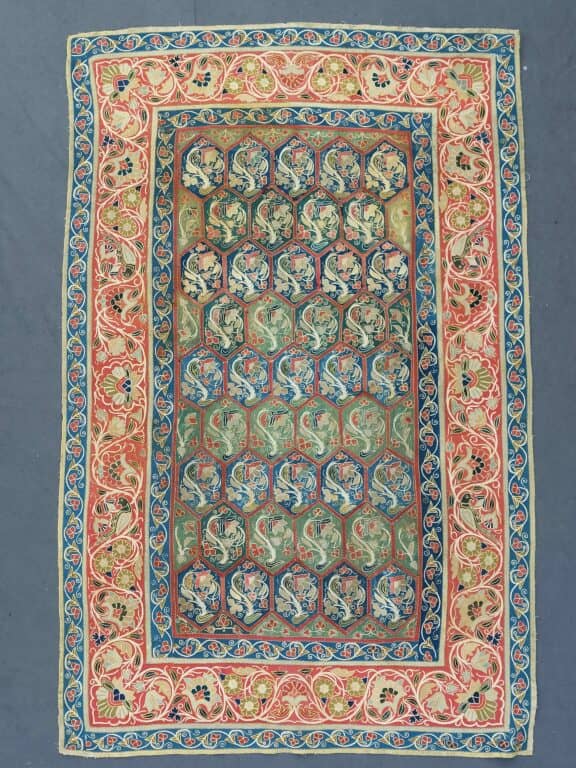Persian Rasht Embroidery
Description
This Persian Rasht embroidery dates to the 19th century. The north Persian city of Rasht in Gilan Province on the Caspian was famed for providing this type of textile, which was produced in workshops, to the Safavid court at Ardabil. The craft (also known as rashti-duzi) survived well into the 19th century.
The piece in hand is actually a textile constructed in mixed technique. Different colours of wool cloth, mostly broad cloth, are assembled in the way a patchwork textile is put together, but with the seams overcast in black and golden coloured silk. The hexagons forming the field are arranged in nine rows of alternating blue and green fabric, which creates a honeycomb structure. They are individually embroidered in tightly twisted silk, with the fine chain stitch “drawing” an elegantly swerving plant with one main drooping flower head in every hexagon. The repeat of this pattern produces a wavy movement throughout the field, a characteristic often found in Rasht embroideries.
The main border on a red ground is flanked by two minor borders on a soft blue ground. The design of all three borders is a meander of flower heads surrounded by vines, with the inclusion of two birds echoing the shape of the vines on each side. This patterning underlines the visual emphasis on curved lines.
The textile, which would make a beautiful wall hanging, has small areas of almost invisible damage but is over all in good condition.
SOLD

